
It’s easy to see how digital strategies like content marketing and SEO complement each other. But email marketing? What do emails have to do with search engine results?
It turns out quite a lot, if you take a concerted effort to make your emails SEO friendly. Here are 20 ways to do it.
1. Use Keyword-rich Text
Emails don’t need to be stuffed with images and videos to capture your audience’s attention. Simple text is often enough to get your message across.
At the same time, including keyword-rich text is important if you want to repurpose your emails for the web down the road. So use visuals in your emails when they’re relevant and add value. But don’t underestimate the value of regular keyword-rich text to optimize your email and SEO strategies.
2. Archive Your Newsletters On The Web
Archiving your old newsletters on the web is a great way to repurpose old content. It also gives you more indexable pages on your site for Google to crawl.
As long as your writing is SEO friendly, you can reach a new audience of people who discover your emails through keyword search. You can also include links from your archive pages back to other pages on your site. This is good for building a network of internal links and attracting traffic to your blog content.
Hubspot archives all the newsletters for their partners online:
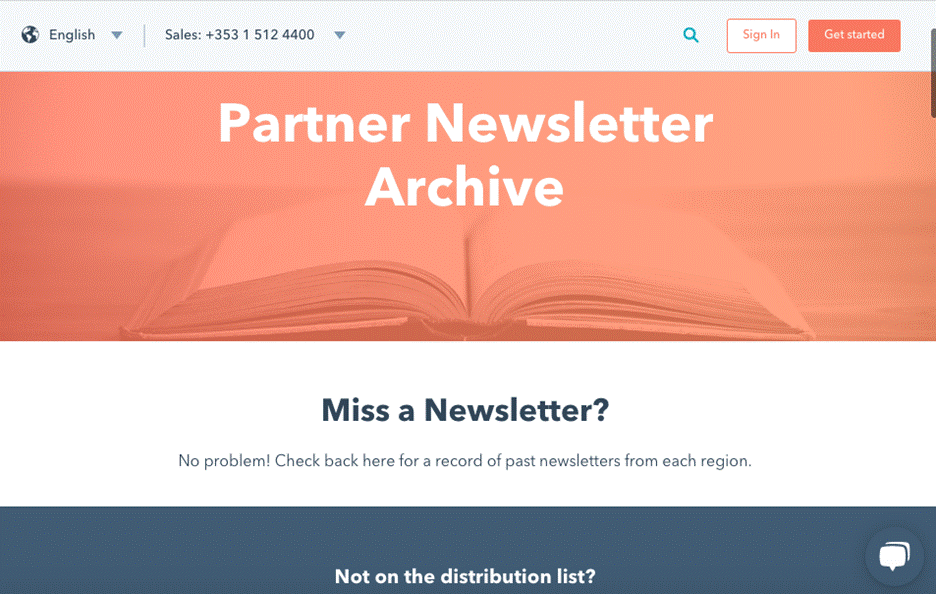
The page also serves as another way to sign up for their distribution list.
3. Use Lots Of Links
Just about all email marketers include some links in their marketing emails to encourage their audience to convert. But if you expand your linking strategy beyond this, you can attract more traffic back to your site for better SEO.
Just like with your blog content, include relevant links in your marketing emails to other content on your website. That way interested readers have an easy way to learn more about related topics.
4. Optimize Your Subject Lines And Meta Description
Besides including relevant keywords in your subject lines, you should also take other efforts to optimize them for search and email simultaneously. Some email subject lines just don’t translate well to the web (e.g. “Jennifer, here’s a coupon for 40% off!”), but others will.
Test how your subject line and beginning sentences might appear as a headline and meta description in search results. Do they successfully convey the topic/value of your content to readers?
Since most email inboxes display a preview of the email body text as well, this is good practice for both email marketing and SEO. Here’s an example of a subject line with a repetitive preview text that could be better optimized for email and search:

5. Use SEO Best Practices In Your Emails
You never know if and when your marketing emails might see the light of day online, so it’s a good idea to use SEO best practices when you write them. That way, they’ll be optimized for search engines when the time comes.
Here are some tips for on-page SEO:
- Include target keywords in your subject line
- Include keywords in the body text of your content
- Use H1 and H2 tags and include keywords
- Optimize anchor text for your links
- Use alt tags with keywords for your images
Here’s a helpful resource on everything you need to know about on-page SEO.
6. Include Social Media Links
Don’t just try to attract traffic back to your website — include social media links in your marketing emails as well. Include calls-to-action asking readers to share your content, visit your Twitter profile, like your Facebook page, etc.
At the bottom of Goodreads emails, they always show options to follow their social profiles:

If you’re running a social media promotion campaign, encourage your email subscribers to join in. While there’s still a lot of disagreement in the SEO-world whether social media engagement is a direct rank factor, encouraging social engagement can help drive other behaviors important for SEO, like building links, encouraging site traffic, etc.
7. Create Landing Pages For Your Email Campaigns
Many of your marketing emails will feature special promotions for your products or services. Instead of linking back to generic product pages, you should create unique landing pages for each of these promotional campaigns.
It might seem like a lot of effort for a temporary promotion, but more landing pages means more opportunities for inbound links, keyword optimization, and higher rankings in search results.
Here’s an example of a targeted Audible email promotion that navigates visitors to a unique “Listens You Love Sale” landing page:

8. Make Special Efforts To Promote Blog Content
You can encourage more traffic back to your blog content if you make special efforts to promote it in your email messages. For example, you can send out weekly or monthly recaps of the most popular content on your blog. Better yet, segment your audience based on their interests and suggest personalized content.
Shopify does a great job of this with their Entrepreneur Digest:

It includes a featured post, as well as trending post suggestions for individual subscribers.
9. Add Canonical Tags
When you do publish your email archives on the web, be sure to include canonical tags to tell Google where to go. For example, you’ll add something like this into your HTML code:
<head> area <link rel=”canonical” href=”https://example.com/promo-codes/accessories”/>
If you have similar content in your emails and on your blog, Google crawlers might mix up the pages. Canonical tags help Google pull the right URL for search results.
10. Make Your Emails Mobile Friendly
According to Litmus research, 47% of emails are now opened on mobile. If a subscriber opens your marketing email on mobile and finds it difficult to consume your content, they’re likely just to navigate away.
So if you want to encourage people to click your emails and visit your website, make sure you’re delivering mobile-friendly content. Make sure any visual elements load well on mobile, and make sense for single-column viewing.
Litmus has a great email testing tool that allows you to preview how your emails look on different phones, computers, and email clients:
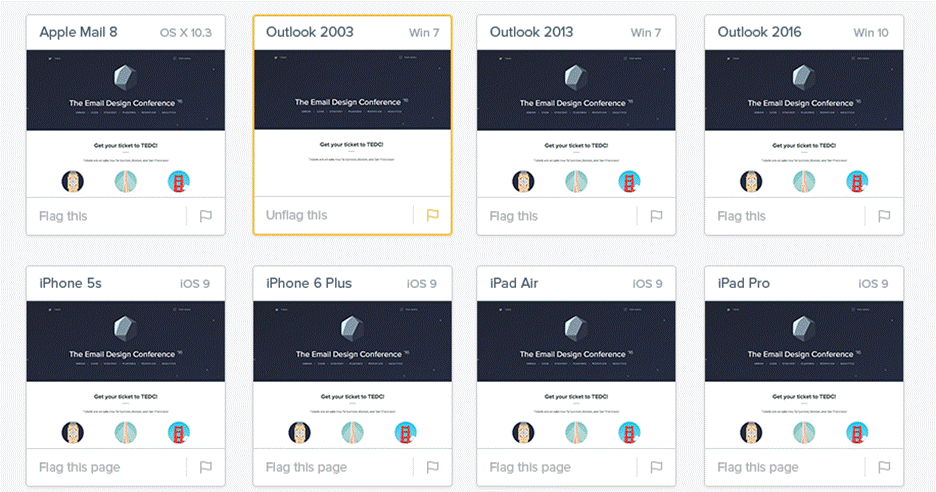
11. Encourage Blog Engagement
Many marketers think of their lead funnel as a one-way path: Visit the site > Consume blog content > Sign up for emails > Consume email content > Return to site and convert. But your email messages are also a great opportunity to attract traffic back to your blog content to nurture leads even more.
Encourage blog engagement through your email message to improve important SEO factors. Include calls-to-action asking them to visit your blog and comment on your posts, for example. Even your signature can be optimized to drive visitors to your site. You can also suggest they subscribe to your RSS feed to see more of your blog content regularly.
12. Encourage Others To Link To Your Pages
Inbound links are an important rank factor. The more high quality links you have pointing at your pages, the higher your Domain Authority (DA).
Depending on your industry, your email audience may have websites themselves that can link back to your content. If so, encourage them to do just that with your email message.
For example, use your emails to promote your unique, high-value content that your subscribers might want to share with their audience. New research reports, white papers, or ultimate guides can attract a lot of links with this strategy.
13. Encourage People To Share
If your email message includes something informative, helpful, or entertaining, chances are some of your audience would be happy to share it on their social profiles. Make it easy for them to do this by including social share options right in the email (e.g. “Click to tweet”). Make sure what they’re sharing includes a link to the content on your website.
MarketingProfs sends out daily digests with links to share content on Twitter, LinkedIn, and Facebook:
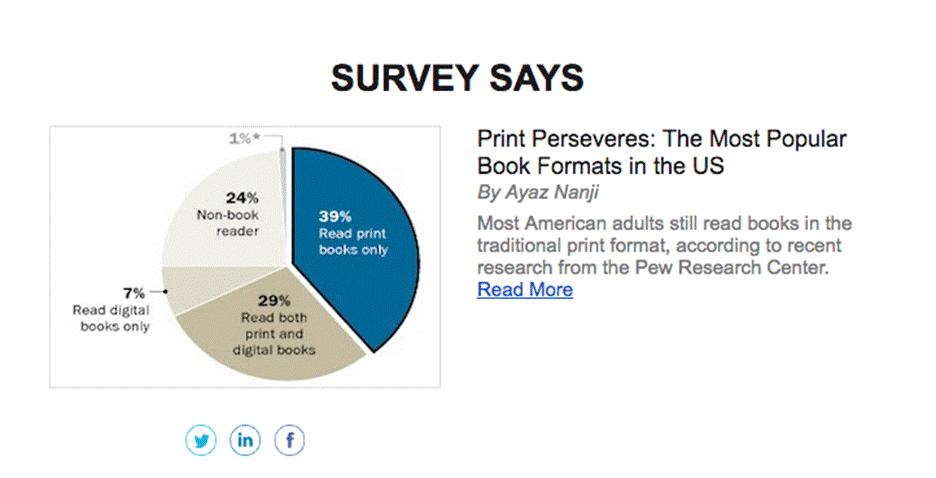
The more reach your content can get on social media, the more likely it will attract traffic and links for better SEO.
14. Use Special Offers
Offer your email audience special discounts, sales, and promotional offers targeted to their specific interests. These are not only a great way to get subscribers to visit your site and convert, they also help improve on-site engagement and can even be used to build links.
Search engines pay attention to metrics like click through rate, bounce rates, time on page, etc. Promotional offers can encourage your subscribers to visit your site and engage in this way.
15. Test Your CTAs
You’d be surprised at how minor changes in your CTA can impact clickthrough rates on email. Friendbuy once improved their clickthrough rate by 211% by making one simple change to their CTA:
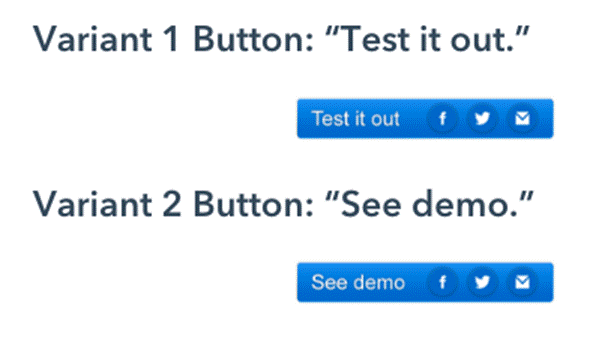
Text, positioning, color, and font can all be A/B tested to help you create a CTA that resonates most with your audience. Since attracting email traffic back to your website can improve SEO, it’s even more important to optimize your CTAs to get more clicks.
16. Turn Your Emails Into Blog Posts
Beyond simply archiving your newsletters, you can repurpose emails into blog posts to get more mileage out of the content and reach a wider audience.
That said, marketing emails tend to be short and sweet, while search engines prefer longer, in-depth content. To get around this issue, consider turning a series of emails into a single blog post, or even an ultimate guide. Bundling your emails together can help you create more valuable content for your blog audience, and give more opportunities for SEO.
17. Segment Your Brand Advocates
While the majority of people will passively consume your emails and make the occasional click, there are some who are highly engaged. These brand advocates are more likely to click back to your site and listen to your calls-to-action asking them to share, write a review, etc.
To make the most of these SEO-improving behaviors, consider segmenting out this group of brand advocates to target them with specific content. You can offer special promotions as a reward for their loyalty, and ask them to perform more tasks for SEO than you would your broader audience.
For businesses looking to boost local SEO, this can be extraordinarily helpful. By segmenting your highly engaged readers by location, you’ll be able to find those local brand advocates that can assist with SEO growth.
18. Solicit Reviews
Send emails out to your satisfied customers asking them to review your business or products. Reviews are extremely important for local SEO, as Google will display review information right along with your business profile in search results:
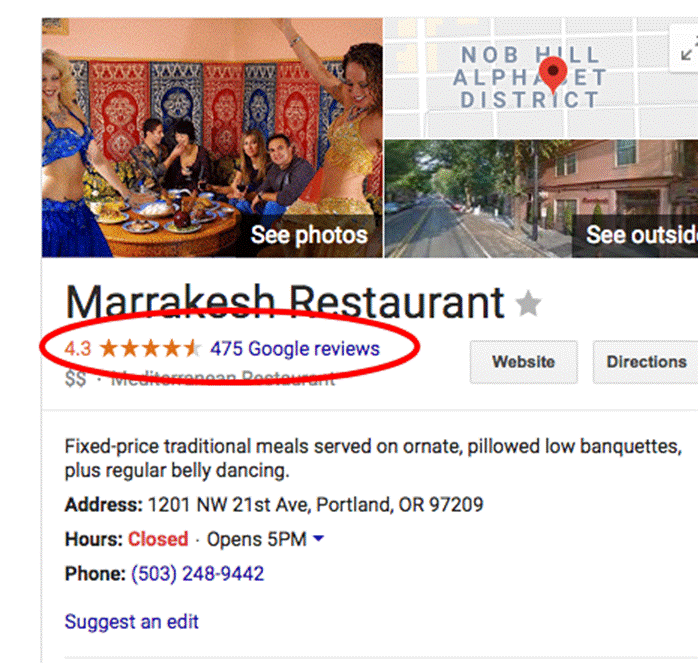
The same goes if you sell products and use product listing ads (PLAs) on Google. These ads aggregate reviews from around the web. Negative reviews can keep people from clicking and visiting your website in the first place.
Through your email message, you can ask customers to provide a review on Google, Yelp, on your website, or another third-party platform. Positive reviews are always good for SEO.
19. Track Your Email Campaigns In Google Analytics
If you aren’t already doing this to monitor email campaign performance, set up URL tracking in Google Analytics to monitor email traffic back to your site. To do this, you’ll need to add UTM parameters to the links you include in your emails, such as:
- Utm_medium
- Utm_campaign
- Utm_source
Here’s a helpful overview of how to track your email campaigns. Tracking your email traffic can help you understand how your email message is impacting SEO factors, and what you can do to improve it.
20. Let Email Performance Inform Your SEO Strategy
How your audience responds to your email content can tell you a lot about what marketing messages resonate with them overall. Pay attention to the performance of your emails and use it to develop better blog content in the long run.
For example, pay attention to which of your blog posts got the most traffic from your newsletters to identify popular content. Or you can incorporate elements of a subject line that got a lot of clicks into a blog post in the future.
Wrapping Up
Digital marketing has a lot of moving parts that work together to deliver your message and encourage your audience to convert. Make your small business emails SEO friendly, and it will help you get the most out of your efforts for better marketing overall. Employ even a few of these strategies to start optimizing your digital reach today.
The post 20 Ways To Optimize Your Emails For Search appeared first on Search Engine People Blog.
(41)






